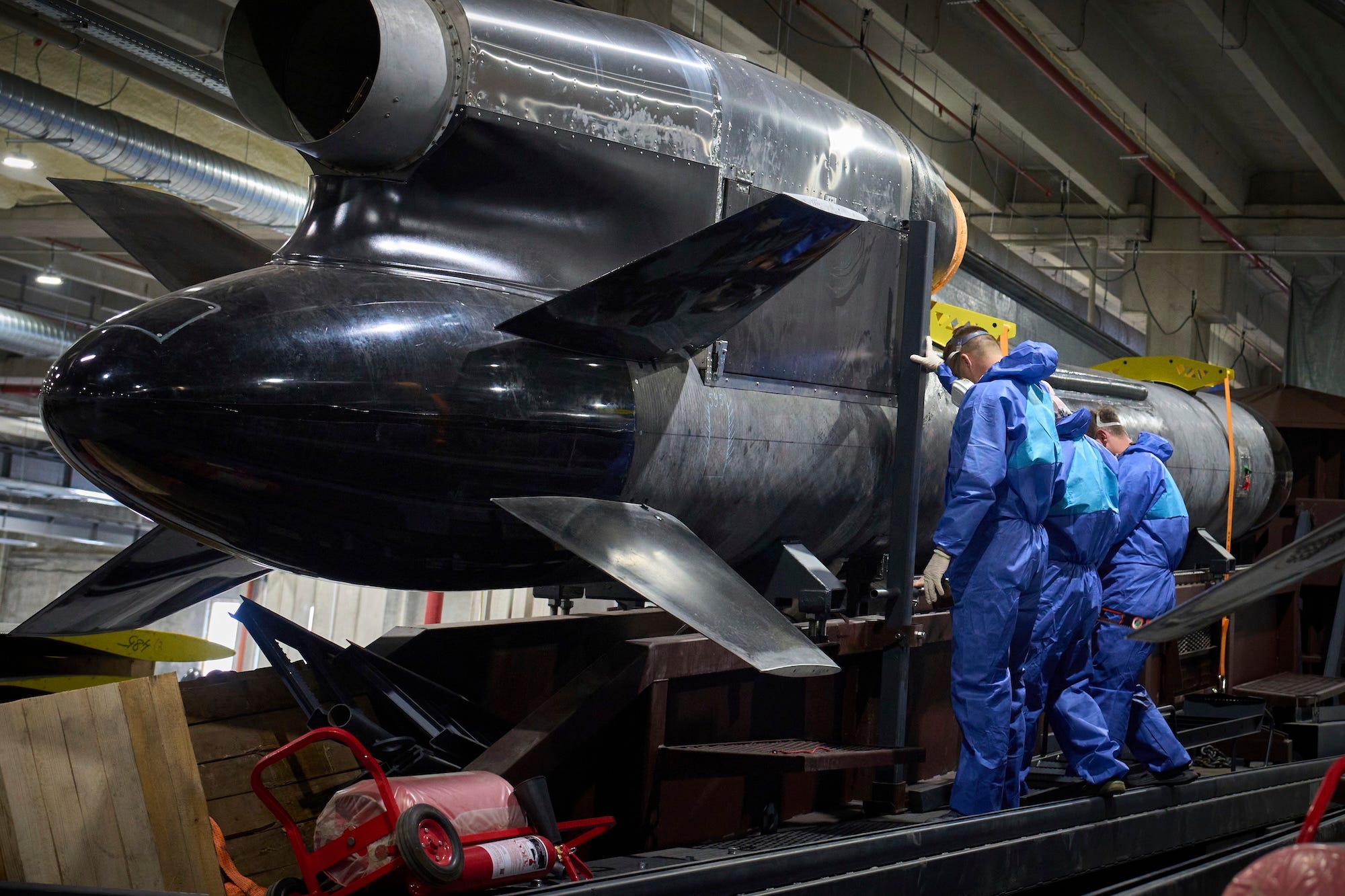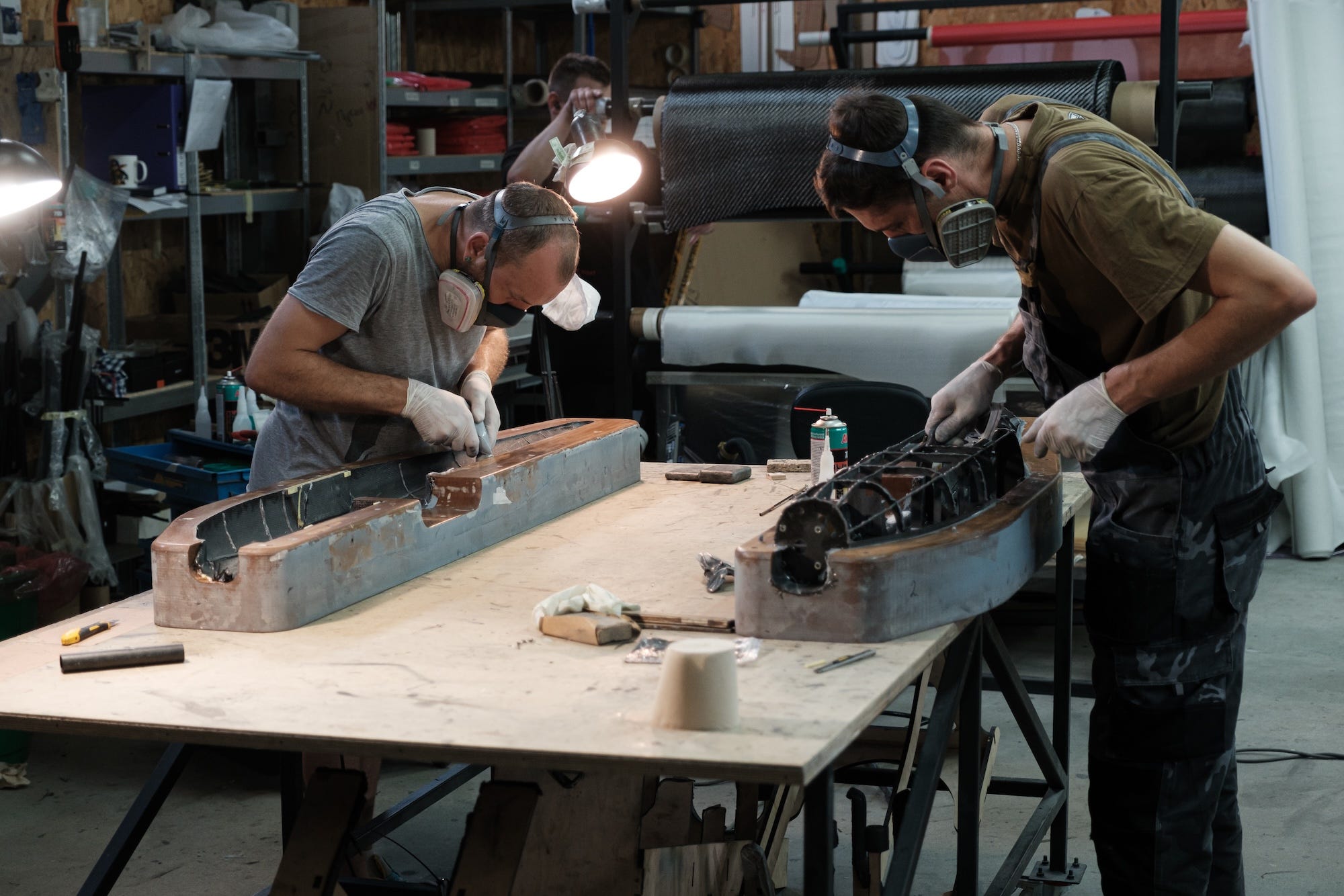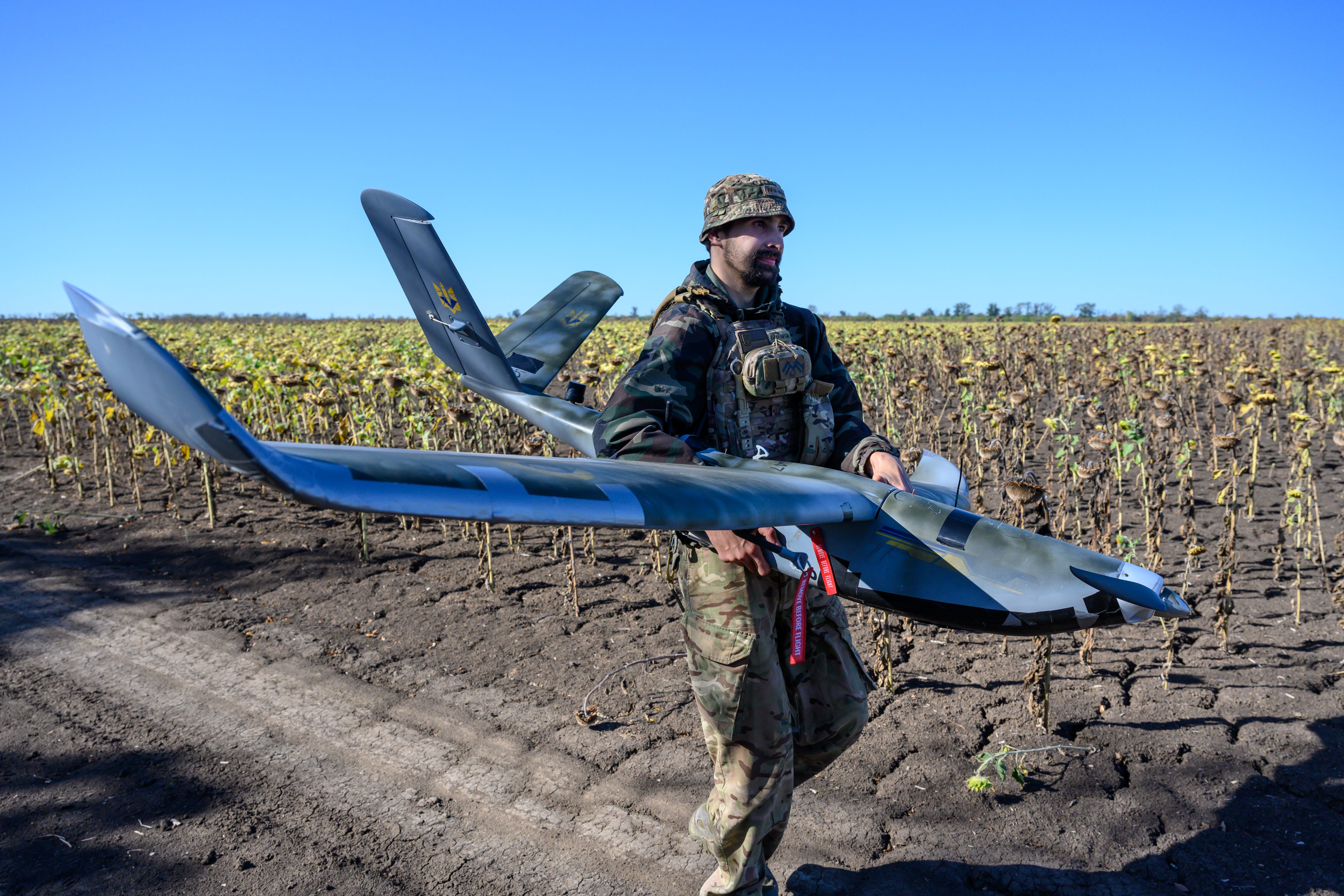
AP Photo/Efrem Lukatsky
- Ukraine’s defense firms say they can make far more weaponry, but Ukraine doesn’t have the budget.
- A new step by a NATO ally could help ease these concerns, among others.
- Denmark is offering Ukrainian firms the chance to make weapons on Danish soil with European funding.
A NATO ally is offering a workaround to help with some of the biggest problems facing Ukraine’s defense.
Ukraine’s defense output has soared since Russia launched its full-scale invasion in February 2022, with companies pumping out drones, missiles, air defenses, and ammunition.
Ukraine is constantly in need of more weaponry, but companies can only make as much as Ukraine’s limited defense budget allows. The industry says that with more funding, it could scale up to more than three times its current output.
Denmark’s latest initiative is a small but important step toward addressing that problem, allowing Ukrainian manufacturers to produce equipment on Danish soil. It’s designed to give Denmark access to Ukrainian tech and to also give those companies the support needed to produce more weapons for Ukraine’s defense.
By letting Ukrainian firms build weapons on Danish soil, the initiative turns Ukraine’s wartime production crunch into a chance to expand its defense footprint abroad — channeling Danish funding and European stability into more reliable output for the war effort.
Denmark’s approach
Denmark is allocating over $50 million to help firms start operations in the country under its “Build for Ukraine” initiative.
The country’s defense ministry described it as a joint Ukrainian-Danish weapons production project, noting it also benefits Denmark. Defense Minister Troels Lund Poulsen said it will give his country’s forces “easier access to some of the newest technologies and experiences from Ukraine.”

Vitalii Nosach/Global Images Ukraine via Getty Images
This could be the kind of assistance Ukrainian industry leaders have long called for, arguing that allowing Ukrainian producers to sell weapons to partner nations— not just to their own government — lets them scale up and ultimately make more for Ukraine’s fight.
Ukraine’s defense minister, Denys Shmyhal, said in August that the Build for Ukraine plan would also provide more weapons to his own troops, saying it would “ensure more effective equipping of our warriors with everything they require.” The joint projects are eligible for EU funding, the defense ministry said.
Right now, Ukrainian rules surrounding exports are so stringent that companies and industry bodies working on its defense say that exports are effectively frozen. Denmark’s new move could be something of an export opportunity, just via relocation. It opens the possibility for technology, know-how, and intellectual property transfers or collaborative development.
That production being on NATO soil provides protection from Russian attacks and aligns with Ukraine’s goal of integrating itself more with European militaries and industries. It also reduces security costs, which run high in a country at war.
Serhiy Goncharov, CEO of the National Association of Ukrainian Defense Industries (NAUDI), which represents around 100 companies, told Business Insider that his organization wanted Ukrainian companies to be able to work on co-production ventures abroad, and he hopes other European countries will follow in the footsteps of the Danes.
Ukraine’s government, he said, simply cannot afford to buy “all of the military production that can be produced in Ukraine,” and this agreement allows the countries to “support each other,” combining Danish resources with Ukrainian expertise to get more equipment for both militaries.
So far, only one Ukrainian company is planning to set up new operations in Denmark. Fire Point makes drones, missiles, and other weaponry. In Denmark, it’s planning to make rocket fuel. More partnerships are expected, though.

Scott Peterson/Getty Images
Denmark is eager to learn from Ukrainian companies on tech and swift production models as it and other European countries brace for the possibility of expanded Russian aggression.
Poulsen, the defense minister, told BI in February that his country’s defense industry has “a lot to learn from Ukraine.” He wants collaboration so that Denmark can “get some of the lessons learned from the defense companies in Ukraine back to Danish defense companies.”
Ukraine’s production problems
It is vital that Ukraine scale up its defense sector and produce more of its own weapons. Throughout the war, Kyiv has faced recurring shortages from Western partners — either because partners could not afford to send more, didn’t have the stockpiles, faced production backlogs, or, in some cases, wavered politically.
Relying on its own weaponry allows Ukraine to avoid this problem, as well as the restrictions that partners have at times imposed on the weaponry, making them less useful for Ukraine.
However, issues like budget constraints have held it back.
Ukraine aims to produce much more of its own weaponry. President Volodymyr Zelenskyy said this month that more than 40% of the weapons used on the front line are Ukrainian-made. He wants to see that number increase to 50% by the end of the year.
Other efforts are underway to help Ukraine ramp up production, like new movement on the possibility of exports abroad.
Being able to produce on foreign soil offers valuable protection that reduces the strain on defense companies that are forced to break apart and disperse operations at home to avoid becoming top targets for a Russian attack.
“We try to be smart about it and not create a big enough target for it to attract too much attention,” the CEO of Ukrainian autonomous systems developer Ark Robotics told Business Insider. The problem is that these preventive measures slow things down and make it hard to scale. The company, he shared, wants to move as much of its production as possible into other parts of Europe.
Denmark was already a leader in supporting Ukraine’s arms output. It spearheads the “Danish Model,” an initiative to buy weapons directly from Ukrainian manufacturers rather than from other European or US firms. That weaponry reaches Ukraine faster and cheaper, without the backlogs plaguing Western producers.
That model increased the production of key Ukrainian weaponry, like the 2S22 Bohdana 155mm howitzer, and it keeps growing. However, it’s still in its early stages, unable, by itself, to close the gap that Ukraine is struggling to overcome and prompting Denmark and other partner nations to keep seeking additional solutions, like “Build for Ukraine,” that can operate alongside it.
Read the original article on Business Insider
The post A NATO ally is offering Ukraine a workaround for its biggest weapons production problems appeared first on Business Insider.




